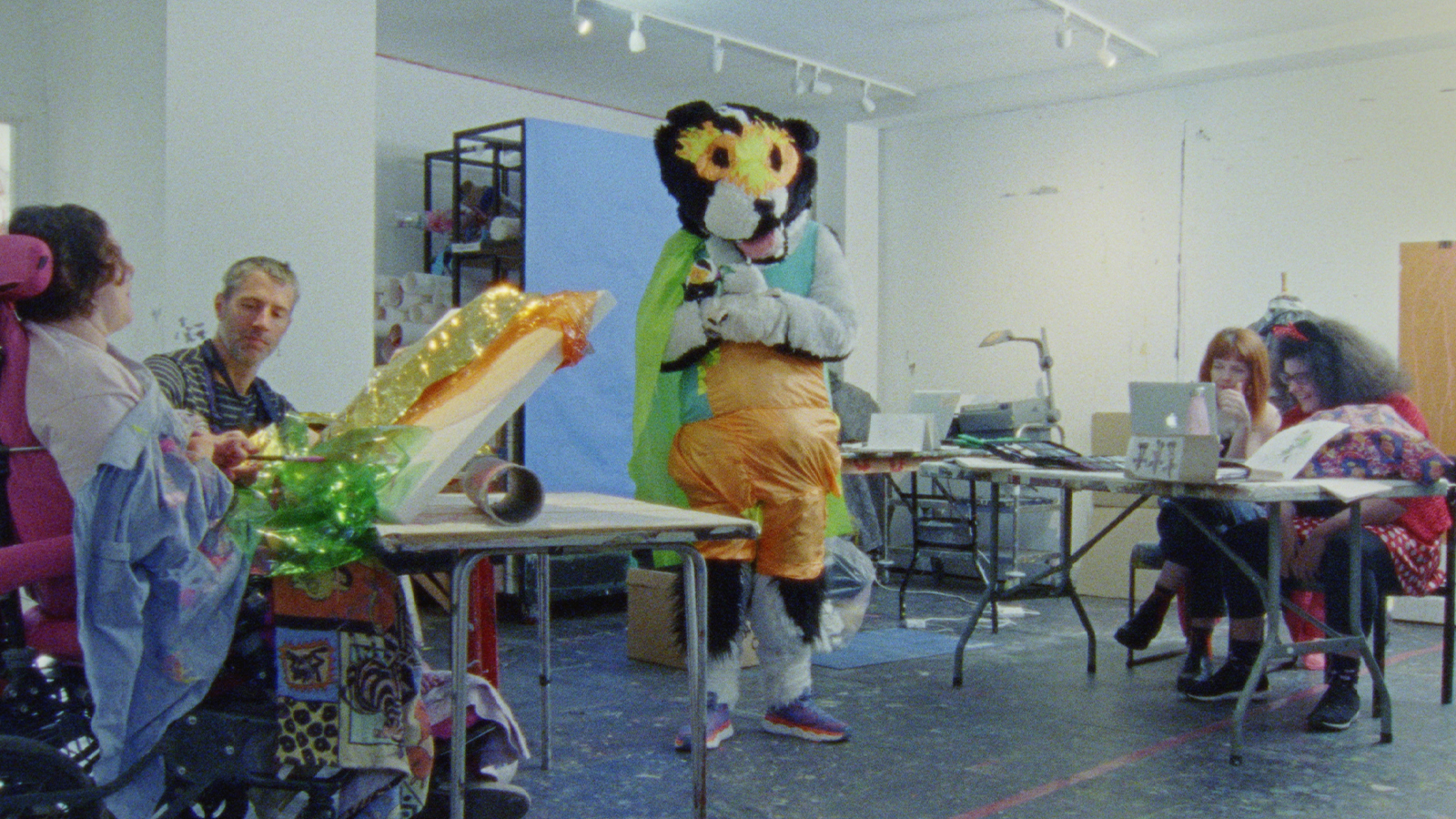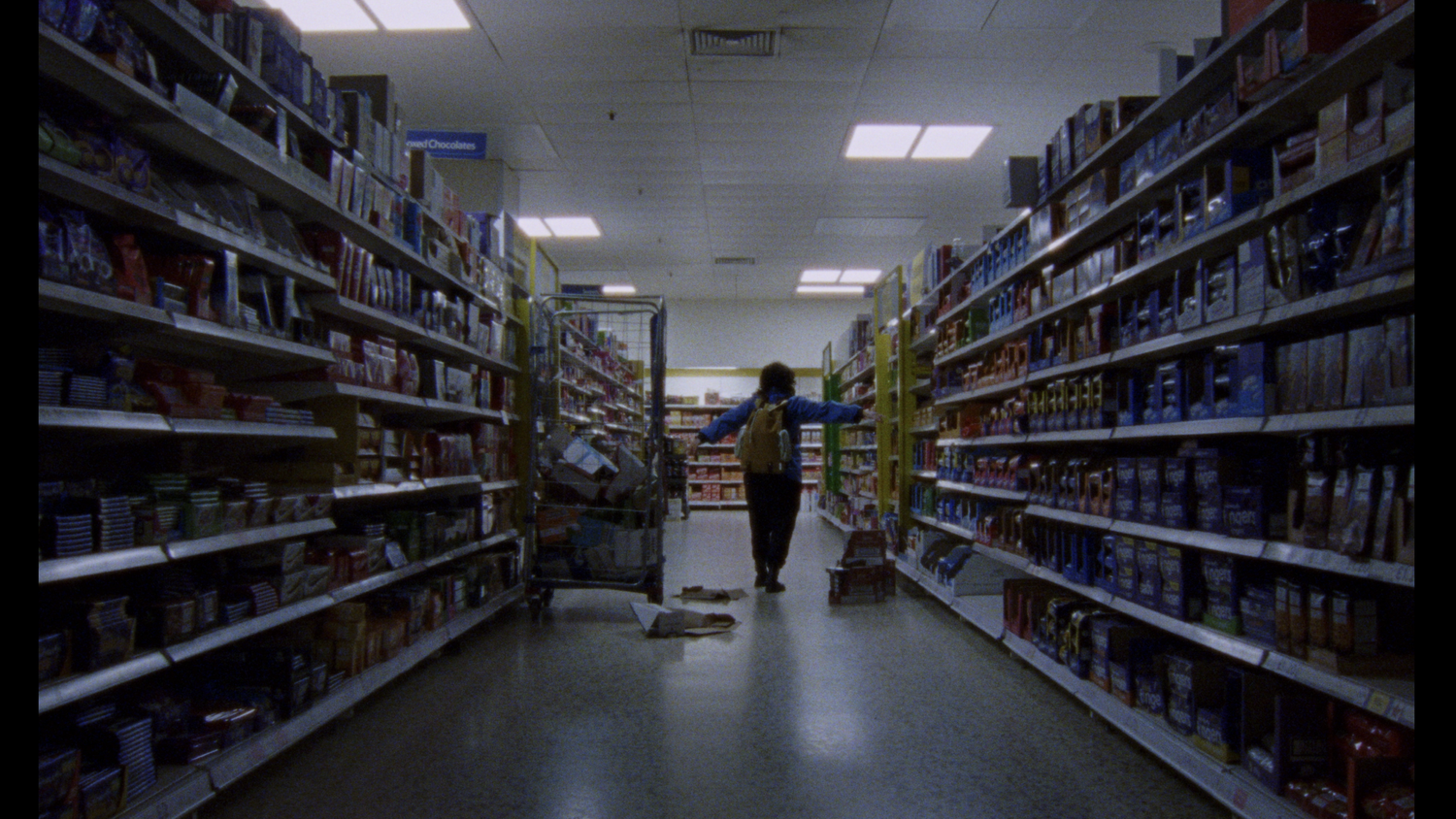Interview with Georgia Kumari Bradburn, co-creator of The Stimming Pool

The film integrates animated sequences, fantastical costumes, and stitches together stories that might seem otherwise disconnected. Is the film's experimental nature simply a result of such a large collaborative force, or is this also the necessary means to portray the neurodiverse perspective?
I think the film's experimental nature is a result of both things you mentioned. What made the collaboration between 6 directors work was the fact that we allowed each other the space to fully explore and realise our own creative worlds. So for me that was the role of the camera in the film, the Shapeshifter (the character in the blue coat) and that aspect of magical realism, for Robin it was the animation, gore and art direction, for Lucy it was the character of Chess and the fantastical costumes, for Sam it was the ideas of social observation and analysing neurotypical oddness in the wild, and for Ben it was a fascination with abandoned spaces and satirising the idea of 'testing' for abnormalities. In order for the collaboration to work we needed to allow each other space to realise these ideas fully and faithfully, so naturally the eventual structure would be slightly surreal in that not all ideas connect in a logical way. But I think that is part of the autistic thinking pattern, not having linear or cohesive thoughts. It also deliberately makes clear the fact that every experience of autism is completely different, and that it would be impossible to make an authentic film about autism from a singular perspective. If we were to propose an autistic cinematic language, it cannot be just one thing as that would freeze autistic people into a single set of characteristics and invite lazy assumptions. I think that’s why more than anything The Stimming Pool is a film about the creative process itself, proposing the potential for multiple audiovisual languages that can communicate multiple forms of autistic beingness.
 Film still from The Stimming Pool (The Neurocultures Collective & Steven Eastwood, 2024)
Film still from The Stimming Pool (The Neurocultures Collective & Steven Eastwood, 2024)
Scenes are woven together by visual symbols, such as the graphic eye tracking device and the costumed character Chess. How did you decide on these motifs?
The eye-tracking device was something that has been part of the project from before the film started development. The film was part of a research project called Autism Through Cinema which sought to explore the relationship between autistic experience and moving images, collaborating early on with Dr Sebastian Gaigg of City University London who used an eye-tracking software to explore how autistic people interact with images. Eye-tracking is commonly used in market research and (less commonly now) in medical settings to identify what fascinations an individual is drawn to within a frame. We used this in the project to explore how, for autistic people, these fascinations in moving images are often not the immediate focus, but background details, often things that repeat and loop and move in ‘stimmy’ ways, like a tree branch slowly moving in the breeze. The eye-tracking dots that you see in the film become themselves objects of stimmy fascination, which to me always signified us moving out of a medicalised, diagnostic space and into a space of autistic delight and creativity. It felt like a natural motif to return to throughout the film as it makes the viewer somewhat self-conscious of their own state of ‘watching’ and delighting in patterns or familiar spaces/characters. Chess’ reappearances throughout the film link back to the story Lucy had developed, shown in the storybook she made. Chess is a sort of spirit animal for disabled people and travels with the wind to help and protect those who feel vulnerable. Every time Chess appears, whether in dog form or as Lucy dressed in costume, it’s supposed to bring a sense of comfort, of not feeling alone. I hope that as well as his appearances helping the characters in the film, they bring some comfort to the audience too.
Could you describe the connections between liminal / abandoned spaces and the autistic experience that arise in the film?
I feel as autistic people we inhabit a liminal space in society, of being and simultaneously not being a part of life. There’s that feeling pre-diagnosis of just waiting, often years, for a piece of paper that validates your identity and allows you to get the help you need. We talked a lot in our creative development phase about waiting rooms, what they look like, what they feel like, a designated space that exists for people to wait in, what’s more liminal than that? And then once you’ve waited and have that piece of paper you still constantly feel on the outside of things. These community spaces like the supermarket, the gym, the pub, the swimming pool—they aren’t made with autistic needs in mind, so often we cannot exist in them. Reimagining these spaces in different contexts, empty, abandoned, primed for reinvention—there’s catharsis in the idea that we can re-wild community spaces with neurodivergence. That’s why it’s called The Stimming Pool, a space with an initial purpose that has been transformed to fit the needs and wants of the autistic community, a utopia. I was very grateful to work with Ben as he was the one that brought the idea of abandoned spaces to the film. He directed the scene in the abandoned testing facility that satirises the testing process, one of my favourite scenes. Again, a radical reclamation of a neurotypical practice (obsession with pathology) in an abandoned space that is open to being repurposed.
 Film still from The Stimming Pool (The Neurocultures Collective & Steven Eastwood, 2024)
Film still from The Stimming Pool (The Neurocultures Collective & Steven Eastwood, 2024)
Through the personality of the camera and the unconventional narrative, the film itself becomes aligned with a neurodiverse, subjective experience. Could you tell us about the embodied autistic phenomenology of cinema, and how it emerges in The Stimming Pool?
This was really my main interest when I joined the project, in fact my BA thesis was about autistic phenomenology and embodied cinema. I’m not so interested in autistic representation on screen as I am how an autistic language emerges through the film itself, so I devised a manifesto for an autistic camera that outlined the character profile or ‘diagnostics’ of the camera as an autistic storyteller. I feel that cinema is built upon a very rigid language and semiosis that a lot of neurodivergent people struggle to decipher, as a lot of it is intellectual rather than bodily or sensory. So making the camera autistic was my way of challenging that and proposing alternative ways to communicate autistic expression. We worked with a wonderful DP, Greg Oke, who read my manifesto and understood exactly what it was that we wanted to do. Throughout The Stimming Pool the camera moves between different states of being, for example masking as a documentary camera that follows all the rules of filmmaking, tracking subjects, maintaining eye-line, etc. Then sometimes the camera begins to shift, moving out of these boundaries and becoming distracted by something else in or out of frame. Sometimes the camera stims, delighting in repetitive motions, like when the character of the Shapeshifter is spinning on the floor and the camera learns to spin with them. It can be quite an out of body experience when the camera does something unexpected like that, because it breaks down the illusion and reminds you of its physical presence as a watcher, as something that is documenting. My hope was that it would allow the viewer to draw their attention to their own bodies and become implicated within the movement, satisfying any urges they may have to break out of a state of masking and stim along with the film. It was important to me that more than anything the film could be felt, rather than just seen, and the camera plays a huge part in that.
Are there future plans to collaborate with the Neurocultures Collective?
I really hope so, because we’ve all gathered such huge admiration for each other as individual artists over the years. I think Robin and Lucy in particular are really keen to delve into and realise their own personal projects that we only really see snapshots of in The Stimming Pool, so it’s likely the rest of us in the collective will jump in on those. Sam and I have worked together fairly regularly since we made the film, we just co-founded Stims, a collective that seeks to create and curate relaxed or autism friendly screenings and events in the UK, alongside our friend and film critic Lillian Crawford. We are also currently working on a short documentary about a young autistic music group that we’re really excited to share next year.
Interview by Mia Breuer
The Stimming Pool is available in the program of the Online Verzió until 24 November:
https://festival.verzio.org/en/film/the-stimming-pool/